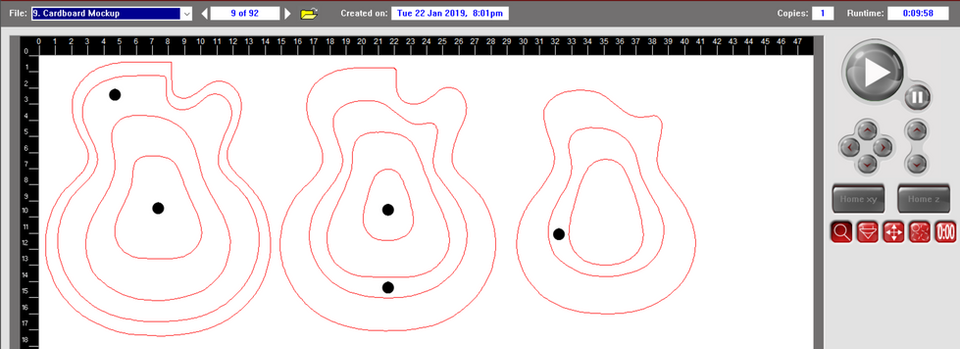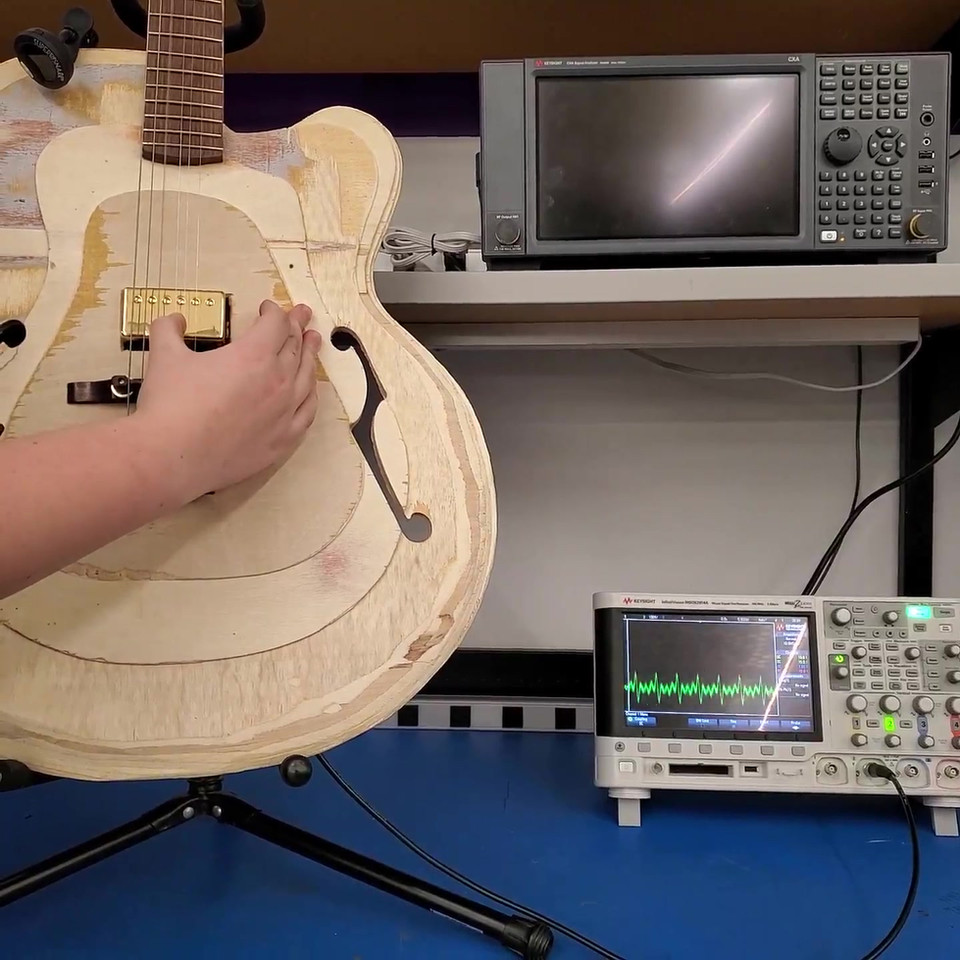
brian
smart guitar
This freshman year hobby, turned final senior design project, has been alternately a tantalizing distraction when I need to be studying and an all-encompassing passion during school breaks. Check out a few of the places it's taken me.
Initially, I planned on building a standard guitar as a way of learning to use as many of the tools in the NYU MakerSpace as possible (I figured as an employee I should probably be at least passingly familiar). As I started to realize what I'd gotten myself into, I decided I might as well go all in and try and make it into a new type of musical instrument, enabling the player to control the sound from on board the guitar itself. Many electric guitar players use effects pedals when they perform, with different effects applied through signal processing as the sound travels to the amplifier. I was interested in how a player would interact with an instrument that would allow them to combine the effects of the pedals with the main body of the instrument itself.
Here are a few of my initial tests and design files. As a way of testing the scale of the models I was making in Fusion360, I laser cut the different parts for a design prototype and verified they all fit together.
The moonflowers were just for fun, inlay art is a continual source of inspiration for me.
For about a year and a half, most of the construction would happen during academic breaks. Summer of 2019 was spent assembling the first electronic prototype of the guitar (bottom left, above), with waterjet cut aluminum supports, tension fit acrylic frets, and a 3d-printed pickup mount. It worked, but with full tension on the strings the aluminum struts had a tendency to deflect upwards. Without replacing them with a stronger material that I couldn't afford or would be too heavy, it was a success for generating the proper signals, but not as a playable instrument.
During the first semester of my junior year, I decided to apply to Phase I of the NYU Prototyping Fund, as a way to see how the work I had done would be received as well as get both resources and advice from people much more experienced than me in a business/prototyping environment. I decided to make the form of the guitar more traditional than the aluminum, and milled the top plate out of plywood and the fretboard out of katalox on a ShopBot Desktop. A few of the original aluminum structural pieces were used to attach the strings, with a threaded steel rod acting as truss rod down the center of the neck. The neck was shaped and fit to the top plate using a manual mill and a belt sander.
Senior Design
The Prototyping Fund allowed me to be confident this project was both technically feasible, and something I wanted to continue. Spring 2020 was the first semester continuing the project as my year-long senior design in Computer Engineering, focusing on the signal processing aspect, advised by Professor Ivan Selesnick.
In the third, plywood, prototype, the changes in the magnetic field produced by the vibrations of the strings are detected by a standard jazz pickup (A6 Benedetto), and hooked up to a Sony SPRESENSE board as an analog microphone. The sound is playing through the speakers behind the computer (see video). The sound produced and volume can be altered slightly using the soft potentiometers along the lower half of the body.
For the final product, the SPRESENSE board was replaced by a Raspberry Pi with a Pisound HAT for low latency and greater flexibility in signal processing. The HAT allows an Arduino Nano to take any input from the soft pot touch controls and output it as MIDI data, while the effects controlled by the sensors can be remapped according to the player's personal style.

With the exception of the sides and some components that were purchased (mainly the pickup and tuning machines), all of the non-electronics were made out of milled, sanded, or chiseled wood.


The sides of the guitar were 3D printed out of ABS to allow a panel on top to swing open for easy access to the electronics inside.
3D printed sides
Woodworking

Final Project
This was my first major project in engineering school and one I spent three years on, with plenty of help from friends and mentors. In its final stage, the project utilized the wifi hotspot capability of the Pisound HAT to allow connection to a phone or computer that easily allowed changes to the virtual pedalboard (example below from blokas.io, the makers of the Pi HAT) setup. The initial idea behind the project was to serve as a way for players to more easily control effects while playing, but it pivoted into a completely reprogrammable guitar. This came with its own set of obstacles, however - and became the inspiration for this project. The ideas of freedom, versatility and sonic exploration in performance have stayed with the project from the beginning and kept it a delight to work on.










